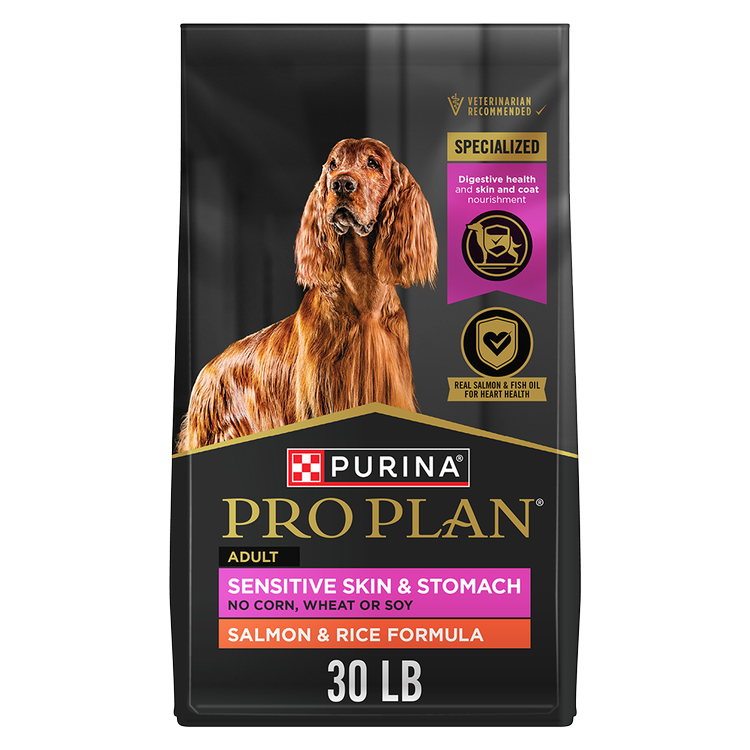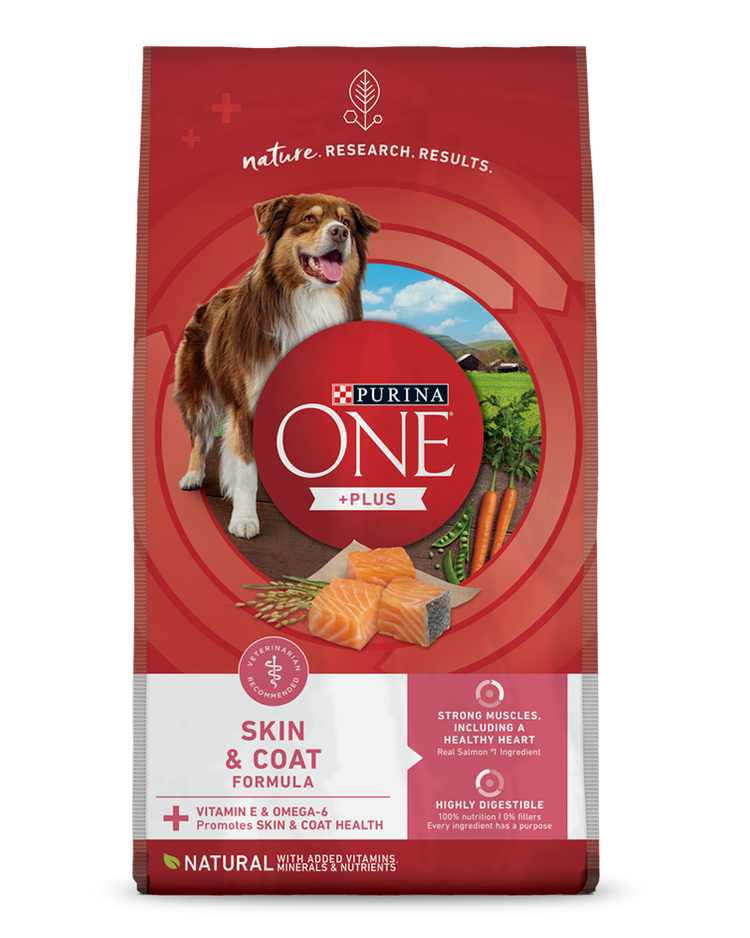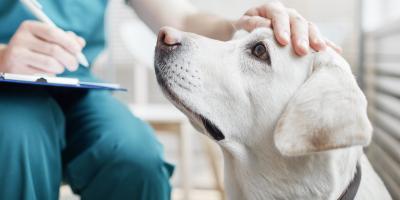Can a dog sweat? Yes, dogs sweat, but differently than humans do.
Dogs perspire through their paws to help cool themselves down.
How do dogs cool themselves? is an essential question for pet owners to know the answer for. Dogs primarily cool themselves through panting and vasodilation. Dogs don’t sweat throughout their bodies to cool themselves, as humans do. Dogs generally can’t regulate their temperatures as easily as humans, so looking for signs of overheating is essential.
Our experts answer the question, How do dogs keep themselves cool? by answering the question Where do dogs sweat from? and by diving into how dogs sweat. Learn why dogs sweat and pant, as well as ways to reduce dog sweating in the summer and how to prevent overheating.
Can Dogs Sweat?
Can dogs sweat through their skin? Technically, yes, dogs can sweat. So, do dogs have sweat glands? Also, yes, dog sweat glands include merocrine sweat glands, primarily found in their paws when they’re hot or stressed.
Fun fact: Dog sweat is odor free until it mixes with resident skin bacteria, similar as in humans, though often not as intense.
How Dogs Sweat and Where Dog Sweat Comes From
Both dogs and humans have sweat glands, but dogs generally sweat less than humans and function differently.
How do dogs sweat to regulate body temperature? Dogs sweat through merocrine glands (also known as “eccrine”).
Merocrine Glands
Merocrine sweat glands produce predominantly water and salt for humans and pups alike. But, in dogs, these sweat glands are found in their paw pads and noses.
Why do dogs sweat through their paws and noses? How do dog paws sweat? What about their noses?
That’s because that area of skin has little to no hair, which allows it to release sweat that’ll cool the body as it dries rather than remain trapped under the hair. When your dog is hot, you might notice wet prints, and that’s from merocrine sweat glands.
Why Do Dogs Sweat and Pant?
You may wonder, Why do dogs pant and sweat at the same time? If your dog is sweating and panting simultaneously, it is a sign of overheating. When overheated, dogs use sweating and panting to regulate their body temperatures. Other ways may include vasodilation and digging.
Sweating through their paws helps dogs cool down, but panting is the primary way dogs lower their body temperatures. Here’s how panting cools down a dog’s body temperature:
- Dogs quickly breathe in air, which cools the inside of the dog’s body
- Dogs quickly breathe out air and emit heat through their breath
- Quickly breathing in and out evaporates moisture from their mouths and other mucous membranes
- The more humidity, the warmer the moisture, making it harder for dogs to cool themselves through panting
Sweat cools human and dog bodies alike as it evaporates. However, dogs need more than their paws to regulate their temperatures effectively.
Dogs also evaporate liquid from their mouths while panting. So, do dogs sweat from their tongues? Not quite. The evaporating hot moisture from panting cools their bodies, but that liquid is saliva.
Panting is a short-term solution for dogs to self-regulate their temperature because it uses energy that generates heat. Two signs that your dog’s body temperature may be rising to dangerous levels while panting are:
- The width and length of their tongue grows
- Panting becomes heavier or more forceful
These may be signs of heatstroke. You’d need to bring your dog to a cooler environment as quickly as possible and contact your veterinarian. Other signs of heatstroke may include:
It’s important to acknowledge that dogs don’t have the same capacity to keep their body temperatures cool as humans do. If your dog is panting and sweating, they are more quickly prone to overheating than you might be. Even though your dog might love being active outside all summer, it may be best to avoid having your dog exercise anywhere above 75 to 80 degrees Fahrenheit. If a hot environment is unavoidable, ensure your dog has the tools to beat the heat and have them there for as short a time as possible.
How to Reduce Dog Sweating and Prevent Overheating
Is your dog sweating excessively and panting excessively? Your dog may be overheating, so you must quickly cool them down. Here are a few tools and tips on how to prevent your dog from sweating, excessively panting and overheating:
- Dog hydration is vital. Have plenty of cold water available
- Hot tip: Hydrate your pup with a bit of water every 15 to 20 minutes during exercise
- If near water, encourage your dog to play in the water
- Avoid the water if there are any reports of algae, as algae can be deadly for dogs
- Do dogs sweat from their belly? They do not, so swimming in refreshing water to cool their torso is a good idea
- Cease activity and bring them where there’s air conditioning, if possible, the moment they begin panting heavily
- Offer easy access to shade for them to rest in if they show signs of overheating
- Put the palm of your hand on the ground for five to eight seconds. If it’s too hot to do that, it’s too hot for your dog to play or walk on
- Never, ever leave your dog unattended in a parked car on a hot day
- If your dog is in a crate, they need to be somewhere cool with adequate air circulation
Know your dog’s needs. Some dogs are more prone to overheating than others. Keep an extra close eye for overheating if your dog is:
- A puppy
- Senior
- With respiratory or any health problems
- With a dark-colored coat
- With a double coat
How to Keep Dogs Cool in the Summer
The most crucial consideration in how to keep dogs cool in summer heat waves is to be observant of any behavior change, even if you’re relaxing in your backyard with your pup. Know if your dog may have heat exhaustion or heatstroke.
What is Heat Exhaustion in Dogs?
What is a normal dog temperature? It should be around 100 to 102.5 degrees. If a dog’s temperature rises between 104 and 105 degrees, that might be heat exhaustion. Suppose your dog’s sweaty paws and panting follow with drooling and restless behavior. In that case, your dog is overheating, and you’d need to cease all activity and call your veterinarian as soon as possible. Other signs of heat exhaustion may include:
- Ears that droop suddenly
- Lowered tail
- Difficulty breathing
- A sudden disengagement from the physical activities they were doing
What is Heat Stroke in Dogs?
Heatstroke can happen typically when a dog’s temperature rises above 106 degrees, which can be fatal. If you suspect your dog is having a heatstroke, get your dog to a cooler environment and contact your veterinarian immediately. If your dog is experiencing heatstroke, they may exhibit the symptoms listed in the section above, plus any of the following:
- Vomiting
- Diarrhea
- Seizures
- Pale, red or blue gums
- Disorientation
- Rapid heartbeat
Enjoy the Summer With Your Dog
Once you know what to look out for, consider these quick tips for cooling for dogs in summer to avoid dog-overheating activities as much as possible and keep your dog happy in the summertime heat.
- Offer your dog water every time you take a drink break for yourself
- Encourage your dog to play in the water with a pet-specific vest if swimming in open water
- Make sure your dog plays somewhere with plenty of air circulation
- We cannot stress enough: Don’t leave your dog in a parked car
- Have your dog play in the shade
- Avoid the midday heat
- Avoid surfaces where you can’t place your palm for more than eight seconds
- If possible, keep them in air conditioning
- If your air conditioning isn’t working or there isn’t any nearby, choose a ventilated area and have a close eye on your pup.
- Have a professional dog groomer properly cut your dog’s hair to beat the heat
- Fun fact: A dog’s coat can help insulate against the heat. A professional groomer will know how to avoid cutting those areas
For more expert tips on dog skin, explore our other dog skin and ear health articles.
Related articles

Reward Yourself with myPurina
Earn and redeem rewards for Purina products with the myPurina app.








